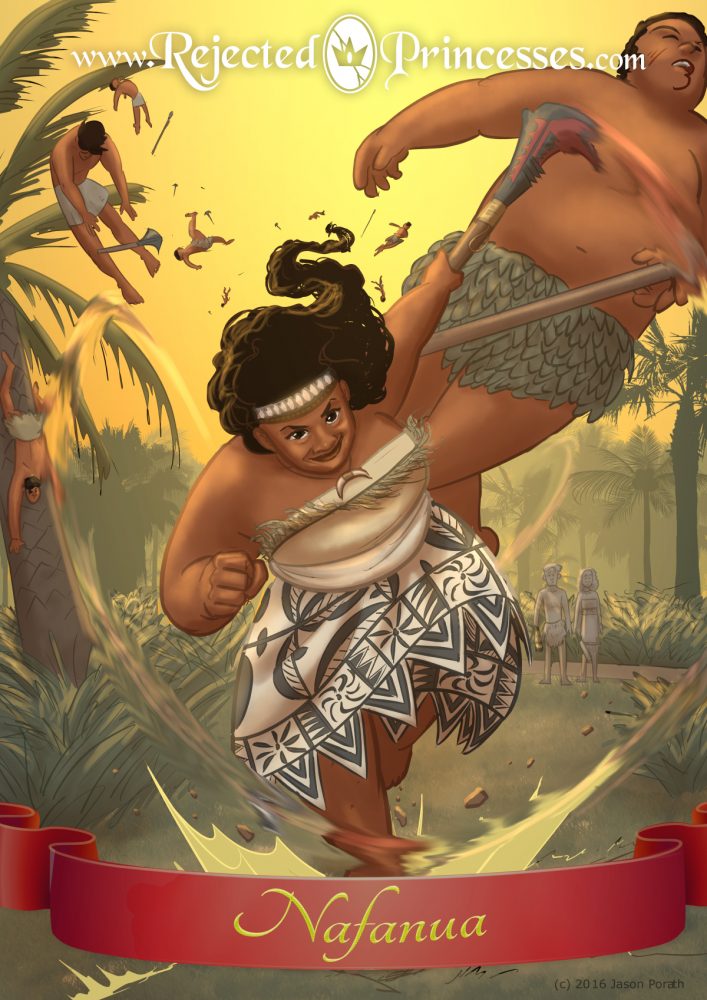Nafanua – Goddess of Love

Saveasiuleo married his niece, Tilafaiga. She became pregnant and gave birth to a blood clot (alualutoto). She was ashamed and hid it underneath a stone near a tree. She could not fool Saveasiuleo, he being a demi-God and knew the situation. He sent an old couple, Motuna and Matuna to be her keepers. They heard a cry and when they lifted the rock, they discovered a beautiful girl who was later named Nafanua.
They raised her as their own and son discovered that she was very outstanding and talented in sports and especially in the art of war. She could out do all the men. Her fame is remembered in her two war clubs called Fa’auliulito and Fesilafai.
There was a war in the village of Salega in Savaii. Nafanua’s foster parents, Motuna and Matuna asked for her help. She instructed her father to take the right flank and her mother to take the left and told them never to cross the center line. During the battle her family were so victorious that they forgot her warning and crossed the center line and her club killed them both.
The men were wondering who this great warrior was who had so viciously beaten all the men. It was not until she jumped over the stone wall and her papa or covering fell off exposing her breasts that they realized she was a woman. Then the men were ashamed because they had been beaten by a woman, not a man. Thus the malae (courtyard) in Salega is called the malae of the ma, which really means that the men were ashamed because they were beaten by a woman.
Nafanua, in her war exploits, accumulated all the four royal titles – Tui Anna, Tui Atua which were called the Papatane (male titles), Gatoaitele of Tui Samau and Tamasoalii of Safata called papafafine (female titles). She became one of the greatest warriors and was known as Nafanua, goddess of war in Samoan mythology.
The above information was taken (as written) from the MCKAY-FALE located in Sauniatu (on the island of Upolu) Western Samoa.